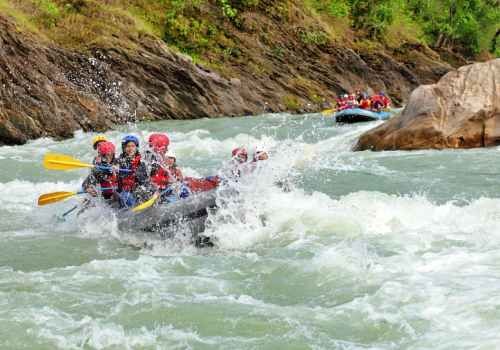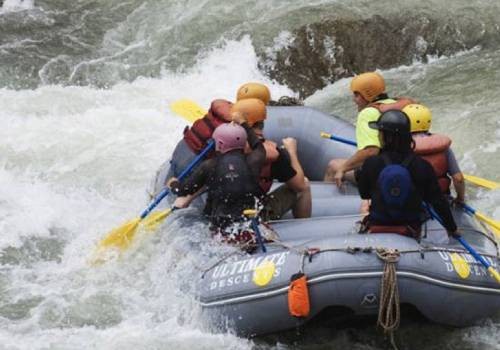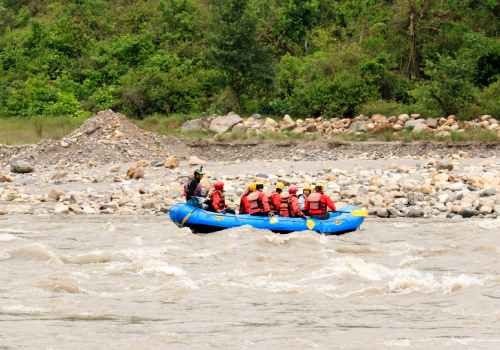Seti River Rafting for two days, one of gentle and moderate grade river for rafting where all types of interested travelers and age group can join in. Seti River Rafting leads to enjoyable and pleasant float downstream overlooking beautiful landscape views of rolling green hills, dense forest, and rural village life of farm and fishing activities.
The river flows from the glaciers of majestic and beautiful Mt. Machhapuchare Himal, popularly known as 'Fish-Tail’ due to its twin summit top and the shape appears like a tail of a fish.
A great way to enjoy rafting on Seti River, the name Seti due to its color ’milky white’ also known as Milky River as the river is fed from the glacier with strong contains of chalk and limestone.
Normally, we start this wonderful rafting adventure from the scenic city in Pokhara, where travelers can join in after their major trips like trekking or tour in Pokhara and beyond.
An ideal river rafting, where all people can fit in from beginners to experts in the world of water sports. Rafting begins after a few hour’s drive from Pokhara near the town of Damauli.
Where our expert river crews and captain of the raft receive you and then provide brief information regarding two days of rafting, about safety measures, paddling technique, and of the river including flora and fauna that you witness.
Rafting starts as you are seated on both sides of the raft tubes, and then paddle along through exciting waves and enjoyable rapids downstream, with overnight camp near a small farm village of Saranghat.
The camp provides you with spacious tents pitched on the sandy beach, where meals are served from our camping kitchen cooked by our expert cook and kitchen helpers, here with time explore around and observe river birds’ like kingfisher, egrets and cormorants including migratory ducks.
Rafting continues heading further downstream on the second day of enjoyable and exciting float and paddle through the last and big rapid, as Seti River joins with Trisuli River.
The river gets wider and bigger on entering Trisuli River and then raft past bouncy waves and rapids to end the water adventure on the shores of Trisuli River near the village Ghai-Ghat.
This small village, located on the main highway that reaches you to Kathmandu, or continue for another adventure to Chitwan National Park for wild-life safari, after a surge of exciting adventure on Seti River Rafting for two days.




